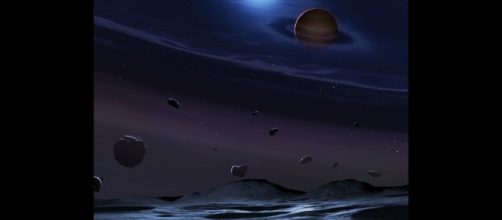A group of researchers led from a team from the University College of London have reported that they have found shattered asteroid remains in a system with two suns, hinting at the possibility of a Rocky Planet in orbit.
The first of its kind
Until this discovery, all known exoplanets orbiting systems with two suns were gas giants like Jupiter. But the evidence found by in the study of the SDSS 1557 system consisted of metallic materials and included silicon and magnesium, making it more likely that there is a rocky planet waiting to be discovered.
Dr. Jay Farihi, the lead author of the study, explained why it is difficult for rocky planets to form in binary systems: the gravitational forces of the two stars are incredibly strong, and prevent dust and bits of rock from sticking together and forming planets.
However, in SDSS 1557, signs of rocky planet assembly can be quite clearly seen, helping understand how rocky planets are created in systems with two suns.
An unexpected surprise
The discovery was unexpected, since at first, the researchers thought that the dusty white dwarf at the center of the system was a single star. Co-author Dr. Steven Parsons was the first to notice there were in fact two stars in the system.
Parsons explained that the second star (a brown dwarf) was hidden by space dust, but after noticing its subtle gravitational pull on the white dwarf, it became clear to him that there was another star out there.
This is not the first binary system to be discovered: an expert in double-sun systems, Parson states that thousands of them were already found. However, SDSS 1557 marks the first time pollution and debris from asteroids were observed in such a system.
Confirming the presence of a rocky planet
Another of the study's co-authors, Boris Gänsicke from the University of Warwick, explains that unless there is continuous debris flowing onto the sun, any metals seen in the white star will disappear in only a few weeks. The next course of action will be to look at the system with the Hubble telescope to make sure the dust is made of rock and not just ice.
Despite the value of this discovery to the research on exoplanet formation, astronomers are not able to detect any worlds in the SDSS 1557 system just yet, due to how widely the debris is spread. Still, the search for a rocky planet in the system continues.

